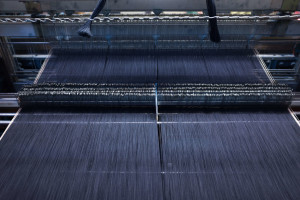
One of the original vat dyes, the indigo dye has been in use around the globe for many years and generations making it one of the popularly used dyes on cotton and linen fabrics. These dyes take their name from the wood tubs known as ‘vats’ which were used for the dyeing process. The use of indigo as a dye was discovered in India where the indigo plant as well as cotton fabric was available in plenty. Let us understand the dyeing process used with regard to the indigo dye in the early periods.
Before the discovery of the indigo dye, the dyes that were used on cotton and linen fabrics would fade away due to the sun’s heat or wash out no sooner than it was used. The indigo dye was noted for its colour fastness, however, the process of obtaining blue dye from the original indigo plant was a hard and a laborious task.It was highly labour intensive and the resultant dye was extremely costly yet it was still popularly used around the world. The basic method of vat dyeing involved the carrying out of a chemical reducing bath in a container known as the vat placed at the ground level or below the ground. This process would change the insoluble nature of the indigo plant and make it soluble. An alkali solution was poured into the vat and fermentation of the organic matter would begin in the wood tubs. This was the first step in the process of obtaining the blue dye from the indigo plant. Fermentation would yield dye liquor which was kept aside to cool. On getting hardened it was broken into big-sized chunks which would be sent to the indigo dyers in divided boxes. The chunks were ground into a water-soluble powder. The mixture would be boiled, cooled and stirred. It would be cleaned off for unwanted materials such as twigs etc. This mixture would be poured into the vat bath which had the cloth to be dyed in it. On adding lime and copperas, the colour of the dye bath and the cloth would change to yellow. The cloth colour changed blue only after undergoing the effect of oxygenation that would occur in a matter of around fifteen minutes on lifting the cloth from the bath. On completion of this process, the indigo would again become insoluble.
Direct, stable printing of indigo came to be done towards the end of the nineteenth century. The natural indigo was soon replaced by synthetic indigo dye in the early 1920s. Today vat dyes are used to dye wool, cotton and other fabrics and the process has also become highly technical. Vat dye can comprise of any dyes such as direct dyes, fibre-reactive dyes, textile dyes and so on. The original vat dye, indigo which was sourced from the plants is now produced synthetically. High colour fastness is the major attribute of vat dyes though they have low rubbing fastness. However, this lacuna can be reduced by passing the fabric through special treatments.
Hail the original vat dye- indigo without which the existence of the blue denim would have been almost impossible!